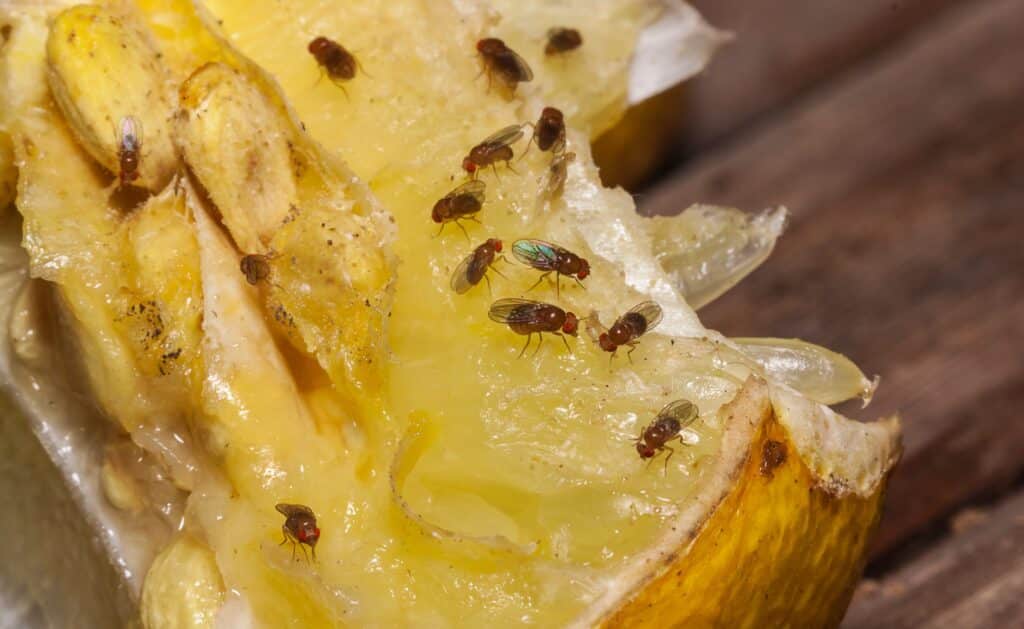Fruit flies are small flying insects often found in and around fruit. They’re fairly common and identifiable by their size, coloration and behavior. With a wingspan ranging from 2-5 mm, fruit flies are much smaller than houseflies and have a yellowish color to their body, with red eyes. When fruit flies appear in your home, you can identify them by their preference for warm sugary foods. They tend to hover around fruit bowls bananas that have started to ripen, which is how they got their name.
Fruit fly habits and reproduction
If it seems like the fruit flies in your kitchen multiplied overnight, it’s because they practically did. Fruit flies reproduce extremely fast. In fact, one female can lay around 500 eggs on the surface of aging fruit or vegetables, and those eggs will start to hatch within 30 hours. Luckily, fruit flies only live for 8-10 days, but they can reproduce quite a bit during that time.
Although fruit flies are most commonly found around fruit bowls they can also be found in and around trash cans, garbage disposals and dirty buckets or mops where fermented liquid has collected in the bottom.
Damage caused by fruit flies
Fruit flies may be tiny, but they can cause a huge amount of damage to fruit, vegetables, crops and nearby plants and food. Hundreds of fruit fly species are found around the world and feed on sugary fruit juices as well as ripening fruit. They lay their eggs inside fruit and vegetables, causing them to rot from the inside out; therefore, making the fruit unfit for consumption. Additionally, fruit flies can spread bacteria which in turn can lead to foodborne illnesses. The best way to protect against fruit fly-related damage is by disposing of rotting fruit at the first signs of deterioration, and creating efficient waste management systems that reduces fruit fly breeding sites in the home or business.
Controlling and eliminating fruit flies
Fruit flies can be a real nuisance in the home, especially when fruit is present. Fortunately, there are simple and effective methods to control fruit flies and eventually eliminates them. Try these tips to remove fruit flies from your space.
- Try and identify where the fruit fly activity is highest and focus on eliminating the problem at its source. Remove any fruits or vegetables from this area as soon as possible.
- Make sure all fruit is stored in tightly sealed containers so as not to attract fruit flies through their strong sense of smell.
- Set traps to capture the fruit flies and prevent them from escaping. There are two great DIY fruit fly traps. The first is to combine apple cider vinegar and dish soap in a small bowl and cover it with plastic wrap. Don’t forget to poke a few, not many, small holes in the top of the plastic wrap so the flies are attracted, but then can’t get out. Another great trap is to set out a small glass of red wine and cover it with plastic wrap, again poke a few small holes on top.
- If cleaning the areas around the food source and using DIY traps does not eliminate the problem, it’s possible the primary source may be elsewhere. Contact an experienced and licensed pest control company, like United Pest and Turf so a trained technician can inspect the area.
What are fruit flies in North Alabama and Southern Tennessee?
Serving North Central Alabama and South Central Tennessee
Limestone County
Ardmore
Home » What are fruit flies?


